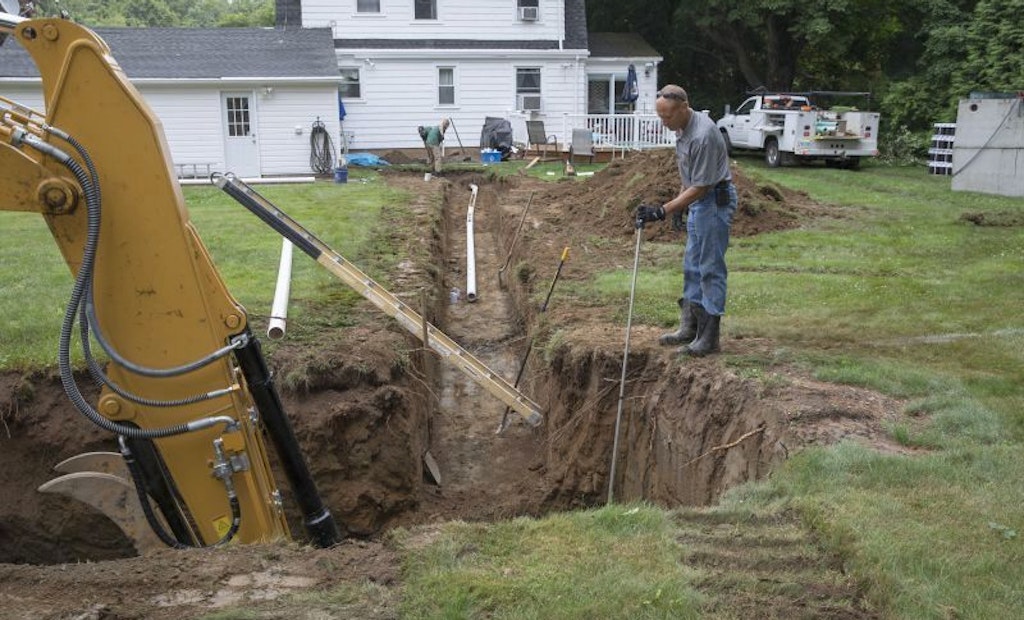
T.M. Wright Excavating co-owner Jay Daymon checks the grade with a Topcon receiver. (Photography by John Marinelli)
Interested in Excavating?
Get Excavating articles, news and videos right in your inbox! Sign up now.
Excavating + Get AlertsWorking in trenches and deep holes can be hazardous, and Jay Daymon and his team at T.M. Wright Excavating always keep that top of mind.
“I’ve been caved in on, and it’s no fun,” says Daymon. “You just don’t put yourself in that situation. This is something you learn over the years. We try to be as safe as possible.”
Team members know and follow the Occupational Safety and Health Administration rules for trenching safety. For installing or replacing sewer and water connections, they use trench boxes when called for. “A lot of times in sewer work, the lateral at the street might be down 7, 8 or 9 feet,” Daymon says. “There is no way we’re going to do that open cut without protection.
“When we install a septic tank, we cut the banks back at a 45-degree angle if the soils are really unstable. If you’re putting a new tank in the same location as the old tank, you have to be very careful because soil was backfilled around that original tank, and that is not going to be stable. Virgin ground is great to work with because you can trust it a lot better, but still, you have to know what you’re doing.
“The first thing we teach everybody is to cut back farther than the original tank hole and to taper the top edges down so they are not above their head. There is always somebody watching the soils and watching the embankments. When new guys come on board, we tell them, if they see a crack in the soil, to let everybody know so we can cut that off. Otherwise it will cave in.”
The T.W. Wright team has taken trench safety courses at the local fire department, taught by OSHA inspectors. Daymon and his brother-in-law Thomas Wright Jr. have Competent Person certification for trenching.
“We know what we’re looking at,” Daymon says. “Some of the soils here are so dense that we could be down 15 feet and we wouldn’t have a pebble fall off, but we would never take that chance. We’ll have a trench box or cut the banks back and make sure everybody is on high alert, paying attention to everything. Sometimes groundwater can be a major issue. There are just so many variables. You have to know the rules and stay safe.”
Read more about T.M. Wright Excavating in a profile in the October issue of Onsite Installer.





